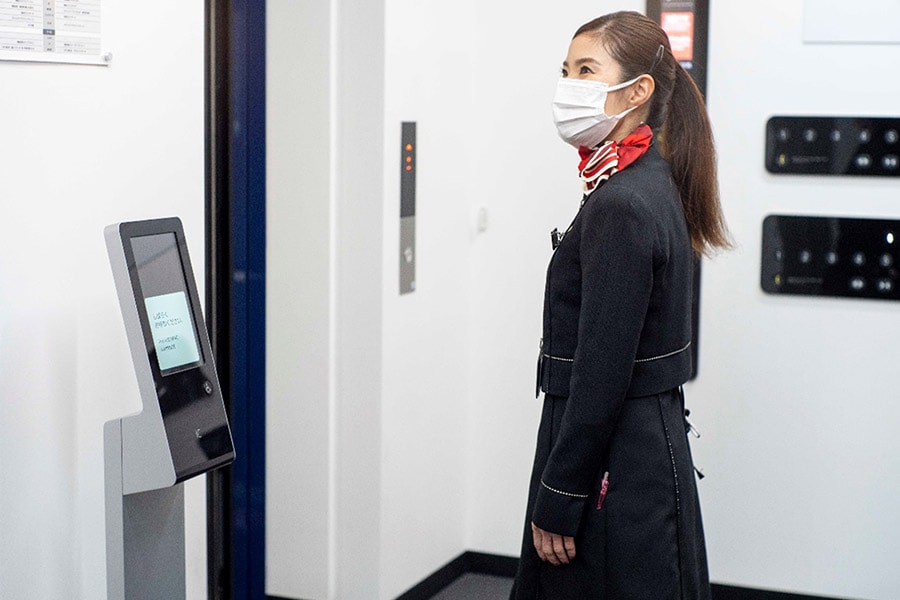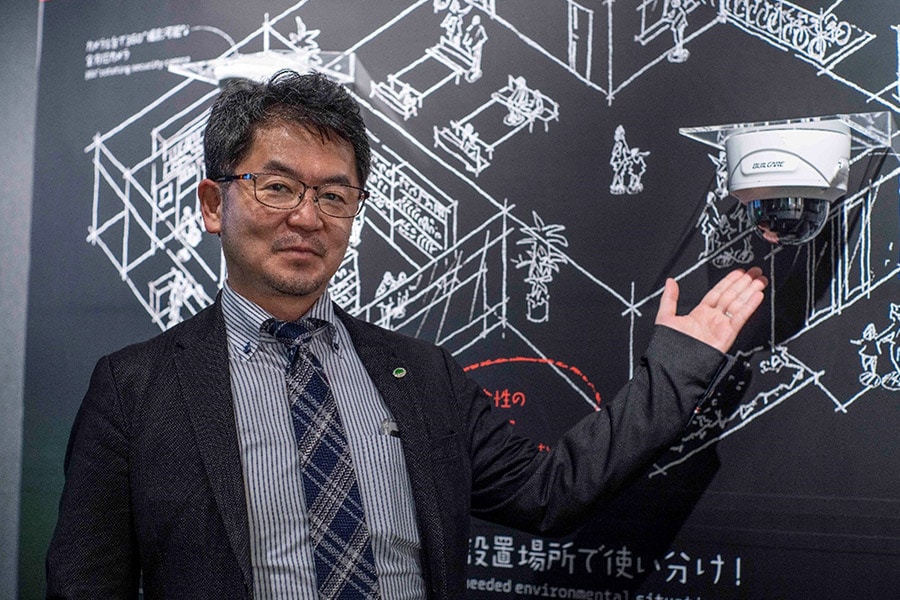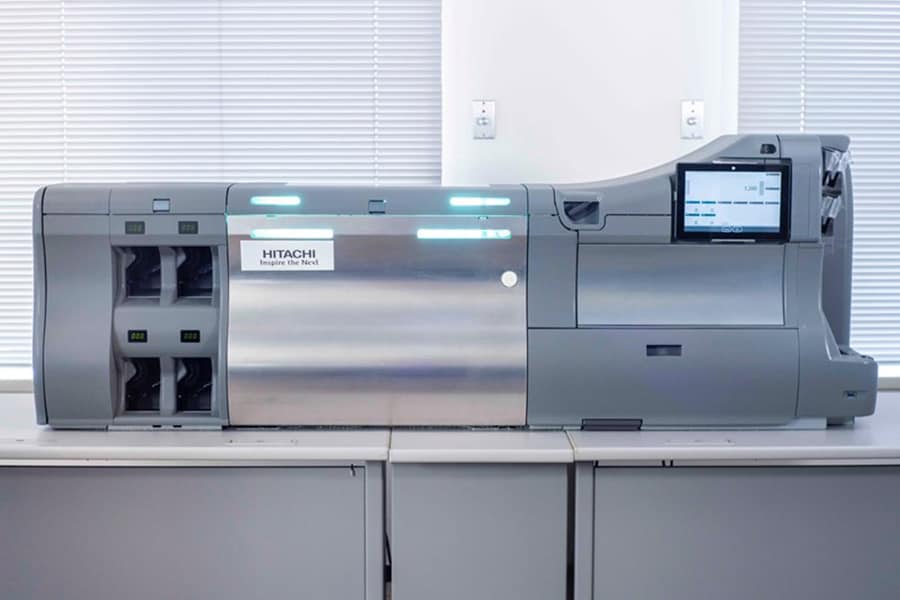Touchless Solutions: Managing building entry and exit using face authentication
Dec. 8, 2020
Editing Team
The spread of COVID-19 has brought various changes to our daily lives and awareness. Wearing masks, measuring temperatures, and sanitizing one’s hands have become more common to prevent infection, and people have become intensely aware of the importance of avoiding the 3Cs (closed spaces, crowding, and close contact) and physical contact within buildings.
Under these circumstances, Touchless Solutions—launched by Hitachi, Ltd. and Hitachi Building Systems Co., Ltd. and forming a systemized approach to touchless products and services for office and residential buildings—have recently been attracting attention. As the name "touchless" implies, these solutions are aimed at enabling people to move without touching elevator buttons or other common indoor facilities in order to reduce contact with other people and contact histories.
Enabling office entry without an entry pass by using face authentication

Among the several solutions that are available, a particularly distinctive one is Hitachi’s Image Analysis Service that incorporates face authentication. In the past few years, the accuracy of face authentication has made great leaps forward, making it a technology with broad potential.
This service offers many capabilities. To begin with, it allows building entry by presenting one's face at an authentication terminal mounted at the entrance doors of an office or residential building. In the case of an office building, this reduces the action of taking an ID card from handbag or a pocket, moreover even no need to bring the card. It can also be linked* to employee attendance management systems.
In addition, the service can be applied to visitors management system by registering their facial image data in advance, thus greatly reducing work such as that performed at a reception, including the handling of applications for admission and the issuing of entry passes.
Touchless travel to destination floors and analyzing people flow to avoid the 3Cs
By registering the destination floor for each of their “faces,” this system helps everyone avoid pressing an elevator button to call an elevator. In addition, it can reduce waiting times based on information exchanged during passage through the entrance gate and the designation elevator to take. This system also analyzes people flow and ascertains congestion states to control the 3Cs in the elevator hall and inside elevators.
Entry and exit to individual offices within a building can also be managed using face authentication, making it possible to minimize contact with common areas while moving from building entrance to elevator and then to the office.
Behind its ability to provide such services* is Hitachi’s expertise, which has a long history of operating elevator remote monitoring system nationwide as well as its building facility management system.
Instant image analysis using existing surveillance cameras

This type of solution delivers major advantages to not only users, but also to system delivery phase. It also has components capabilities of using existing IP surveillance cameras, allowing reductions in implementation cost that supported cameras are already in place.
With this system, image analysis is not processed at the camera. Rather, it is conducted at a separate edge AI terminal. A single edge AI terminal supports connection to up to four cameras, which is an advantage missing from other providers of face authentication services.
The system achieves an accuracy under specified conditions of over 99% and an authentication speed of less than one second. It also fulfills the needs for the COVID-19 era by enabling a single-camera processing of both face authentication and body temperature measurement, which is achieved by using a surveillance camera equipped with a thermal camera.
Shingo Kato, Senior Engineer in the Field Service Division of Hitachi Building Systems and a participant in system development, says "The speed of commercialization was accelerated due to COVID-19. Though we started the development of face authentication software in 2019, we released it far ahead of schedule because of COVID-19 and its surge of cases at the beginning of 2020."
The biggest challenge concerned was how to handle face recognition when a mask is worn—something they had not initially given serious consideration.
Kato continues: "The difficulty lays in the balance of raising accuracy with masked face and sustaining desire of security level. Through extensive demonstration testing, we were able to achieve an almost entirely satisfactory authentication accuracy in the new version, making this service a fantastic promise as a “surveillance” and “touchless” solution during the COVID-19 pandemic."
Likewise, COVID-19 has engendered changes not only in people's daily lives but also in the management of office and residential buildings.
*Linkage of elevators and attendance management systems is a customized option.
Note:Touchless Solutions introduced in the article operate exclusively in Japan.



